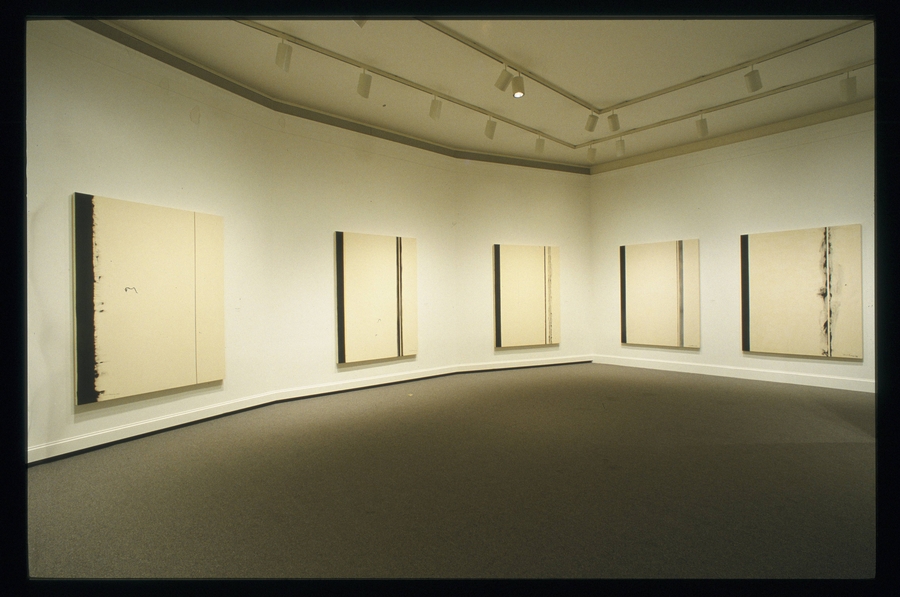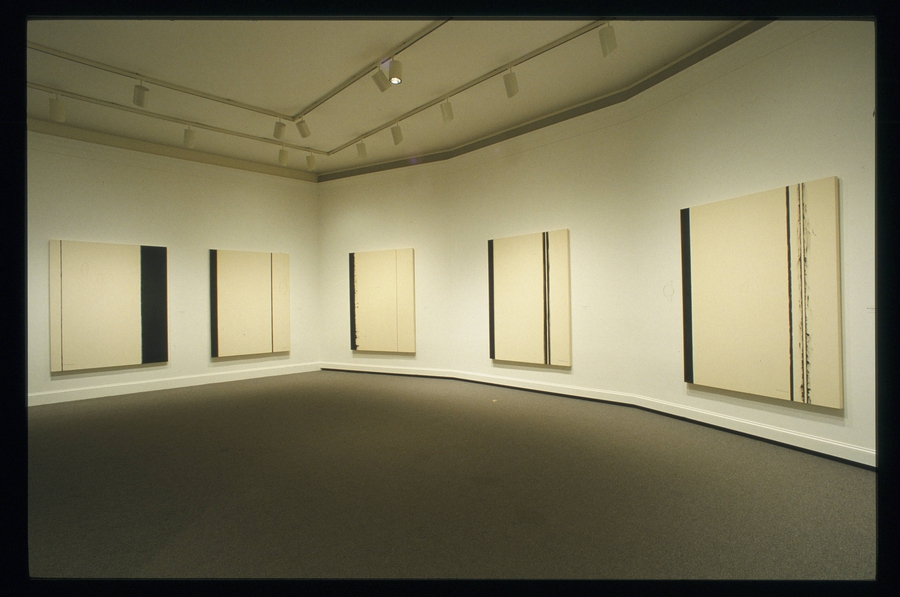According to the art critic Harold Rosenberg there is nothing religious about Barnett Newman’s series of fourteen roughly human-sized, black and white paintings, The Stations of the Cross: Lema Sabachtani. Rosenberg, countering Thomas Hess’s kabalistic reading of Newman’s work, argued that Newman’s The Stations should be understood in the context of Newman’s idiosyncratic, secular world view.1 This in some respect is correct—Newman was not religious in any traditional sense and railed against dogma of any kind—but Rosenberg surprisingly failed to understand fully that Newman’s recourse to a powerful religious symbol allowed him to point to the political import of his subject when other aesthetic and political vocabularies failed him.
For Newman, The Stations were not merely about Jesus’ agony but attested to the human condition. In his catalog statement, Newman wrote, “Lema Sabachtani—why? Why did you forsake me? Why forsake me? To what purpose? Why? This is the Passion. This outcry of Jesus. Not the terrible walk up the Via Dolorosa, but the question that has no answer.” In this moment, it is not just Jesus’ agony one faces with the Stations of the Cross, but as Newman explained, “each man’s agony: the agony that is single, constant, unrelenting, willed—world without end.”2 Newman does not single out Jesus’ particular experience via the traditional narrative of the Stations but uses it to call attention to the fact that every person will suffer and die, that in our very particularity (one cannot die someone else’s death), we are all connected by this fate, separate and together.
The traditional ritualistic nature of The Stations underscores this connectedness. Believers, singly and as a congregation, follow the priest in a procession around the church (or outside in a landscape), stopping at each Station. More than just reminders of a biblical story, the Stations demand action from the participants: recitation of prayers, reflection, and walking from one to the next. This active engagement is fundamental to Newman’s understanding of his painted series. The viewer contemplates the subject and proceeds—along with other viewers—to experience each of the paintings singly and in sequence, considering one’s bodily relation to individual paintings but also turning one’s head to look at the preceding canvases and those that follow. The paintings demand the viewer’s active physical, mental, and emotional participation.
The active engagement of the viewer—walking, looking, reflecting, turning—has the potential to generate physical and metaphysical self-awareness that connects one to others. As Newman told David Sylvester, “I hope that my painting has the impact of giving someone, as it did me, the feeling of his own totality, of his separateness, of his own individuality, and at the same time, of his connection to others who are also separate.”3 For Newman, the mutuality of autonomous individuality and collective togetherness had anarchist political roots that were most fully articulated in nineteenth-century Russian anarchist Peter Kropotkin’s ideas of mutual aid. For Kropotkin, mutual aid was the consciousness of human solidarity, the understanding that one’s own happiness, equality, etc., depends on other individuals’ happiness and equality. Furthermore, for Newman, this mutuality grounded art, holiness, and politics. Newman’s The Stations of the Cross is his most forceful demonstration and reminder of this fundamental human condition. In the midst of the Cold War, when individuality and collectivity were made to do ideological battle, Newman’s art modeled the mutuality that he saw to be the most politically viable premise.
Notes
Notes
1. Harold Rosenberg, Barnett Newman (New York: Harry N. Abrams, 1978), 81.
2. Barnett Newman, [catalog statement for Barnett Newman: The Stations of the Cross, Lema Sabachtani (1966)], in Barnett Newman: Selected Writings and Interviews, ed. John P. O’Neill (Berkeley: University of California Press, 1992), 188.
3. Barnett Newman, “Interview with David Sylvester,” in Selected Writings and Interviews, 257-258.
Imprint
10.22332/con.obj.2014.16
1. Valerie Hellstein, "Barnett Newman, The Stations of the Cross: Lema Sabachtani," Object Narrative, in Conversations: An Online Journal of the Center for the Study of Material and Visual Cultures of Religion (2014), doi:10.22332/con.obj.2014.16
Hellstein, Valerie. "Barnett Newman, The Stations of the Cross: Lema Sabachtani." Object Narrative. In Conversations: An Online Journal of the Center for the Study of Material and Visual Cultures of Religion (2014). doi:10.22332/con.obj.2014.16




